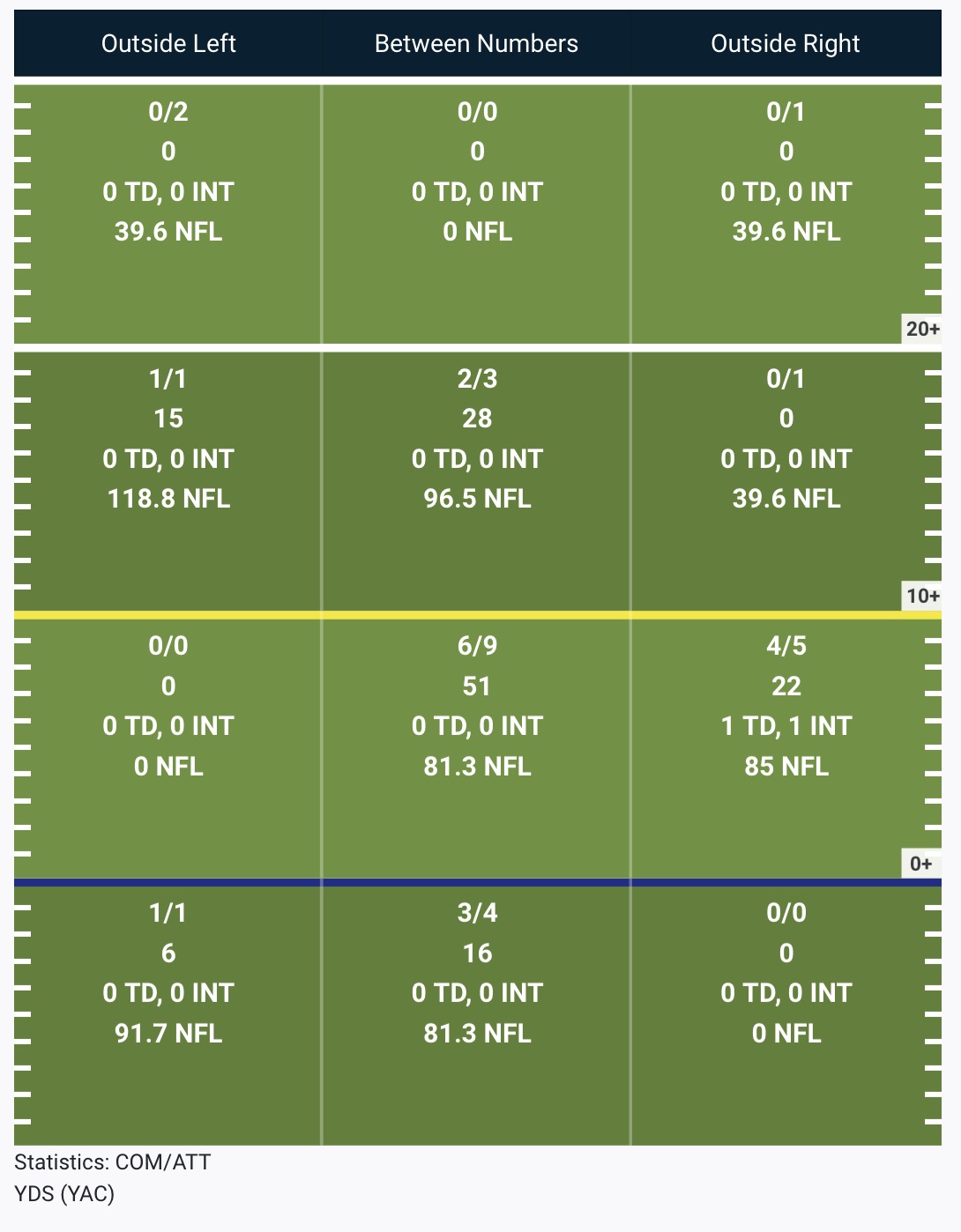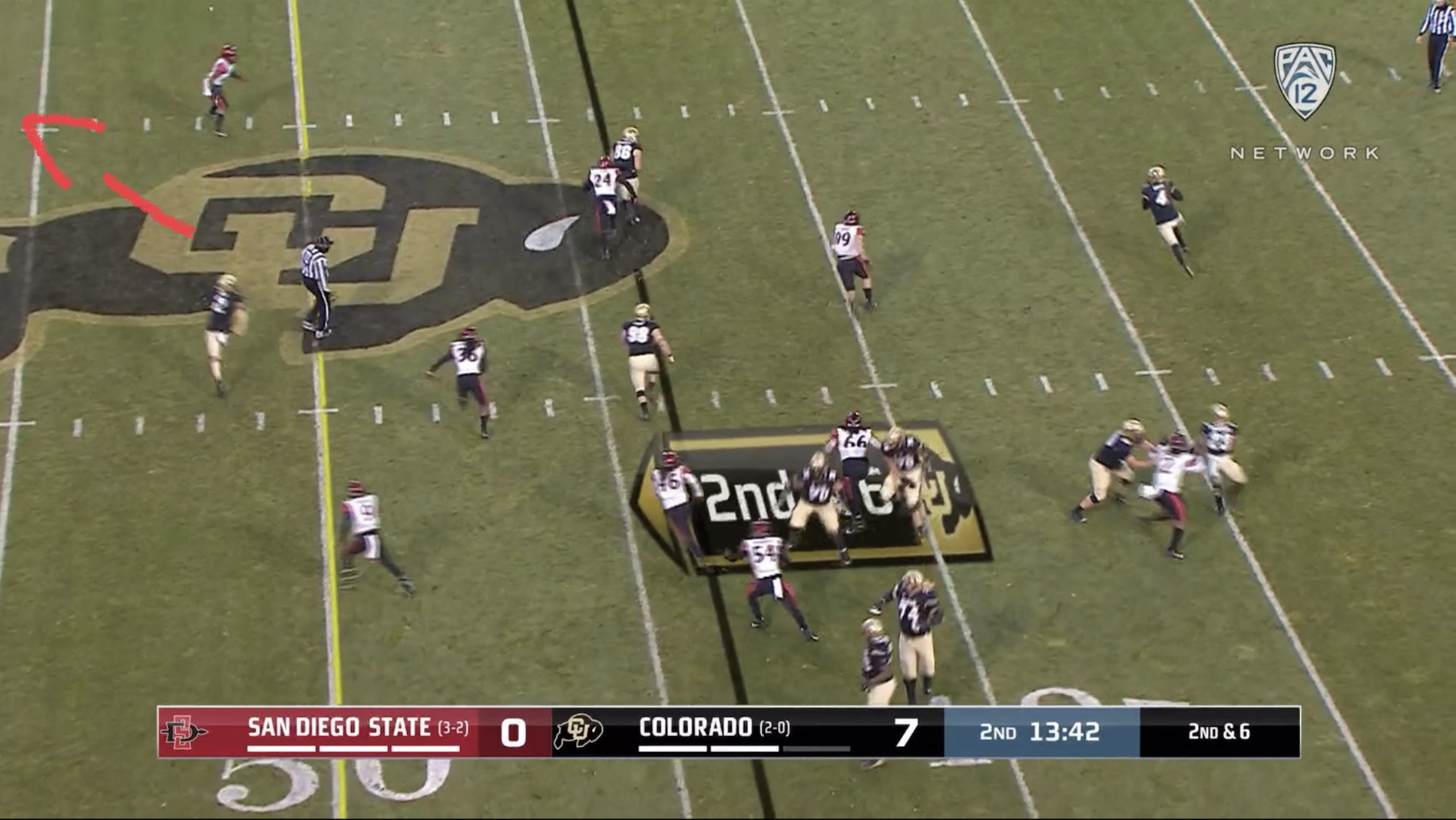© 2025 ALLCITY Network Inc.
All rights reserved.

BOULDER — After starting the season 2-0, Colorado hit some road bumps.
The Buffs’ game against Arizona State was called off due to the Sun Devils’ Covid-19 outbreak, resulting in a “bye week” for CU. The next week, USC canceled because of its own outbreak, but this time the Buffs were able to find a replacement opponent: the San Diego State Aztecs.
But there was a challenge: CU only scheduled the game 48 hours in advance and had to rush to get ready to play.
Colorado pulled out a 20-10 home win against the Mountain West Conference opponent, improving to 3-0 on the season.
Here’s what went down.
Colorado’s defense is dominant
The reason that Colorado won this game is obvious: its defense.
The Buffs defense held San Diego State to just three offensive points and 155 total yards. SDSU averaged 2.7 yards per pass attempt and 2.5 yards per run. The Aztecs had more plays go for no gain or a loss of yards than for a positive gain.
In a season filled with spectacular defensive showings, Colorado’s performance against San Diego State was its best.
Nate Landman led the way (surprising, right?) with three sacks and 3.5 tackles for loss. Two of those sacks came on third downs. He also broke up a pass.
Carson Wells added four more tackles for loss, including a sack.
Isaiah Lewis and Derrion Rakestraw served as effective blitzers.
Christian Gonzalez put together a solid performance after being picked on in both of his two prior starts.
Four of San Diego State’s six first-half drives resulted in three-and-outs, as did four of seven of their second-half drives.
The play-calling was conservative… and maybe concerning
Offensively, Colorado started the game hot.
Jarek Broussard picked up double-digit yards on two of the Buffs’ first three plays from scrimmage, Sam Noyer completed some screen passes and underneath throws and Colorado wound up scoring a touchdown on a 16-play, 83-yard opening drive.
But the Buffs punted on each of their next two possessions.
On one, they picked up a first down but wound up with a 2nd & 11 after a screen pass to tight end C.J. Schmanski didn’t materialize. A couple of incomplete passes later and Colorado’s offense was back on the sideline.
With a 14-0 lead and a little over three minutes on the clock, Noyer tried to throw a hitch to K.D. Nixon. It was the third hitch to K.D. Nixon of the game, and cornerback Darren Hall jumped the route for a pick-six.
Colorado’s game plan was simple. The Buffs wanted to feed Jarek Broussard as much as possible, mix in some screens to keep the defense guessing and avoid putting the ball in harm’s way. But SDSU seemed to figure out what was happening after Colorado’s first possession and countered by loading up the box.
It wasn’t a bad game plan; the Buffs were the better team and it was tough to envision the Aztecs pulling out a win unless CU turned the ball over a few times. There’s no doubt, though, that Colorado was capable of putting up more than the 20 points they mustered. Scheduling the game with 48 hours’ notice didn’t help either.
If you’re trying to play conservatively and grind your way down the field, maybe don’t try a screen pass to a backup tight end, and just feed the ball to one of your proven playmakers.
If you want the passing game to retain relevance by taking what the defense gives you, that’s a great idea. But throwing a curl to Nixon every time the defense is in off coverage is going to get predictable, and an interception shouldn’t be a surprise. Maybe throw in a hook-and-go and try to catch the corner guessing.
But it’s a lot easier to make decisions with the benefit of hindsight, and the truth is that the game Darrin Chiaverini called was good enough to get the win. He put the defense in good situations and limited the number of times the ball would be in harm’s way.
There’s nothing wrong with a conservative game plan when you have the upper hand.
Sam Noyer is Sam Noyer
Before we dig into Sam’s performance, it’s worth remembering that this was his first full game playing with the shoulder injury that progressively got worse throughout the season and made it more difficult for him to throw.
Chiaverini likely called a conservative passing game because of the combination of the talent differential between the two teams, Noyer’s injury and the lack of time to prepare. Regardless, Colorado didn’t push the ball downfield much at all, and primarily relied on short passes and screens.
Take a look at Noyer’s passing chart below.

Noyer mostly threw the ball short and over the middle of the field. The defense wasn’t stressed deep or along the sidelines. This was a departure from what we saw from Noyer in Colorado’s first two games of the season, although intermediate throws to the sideline were always lacking.
Again, there are good reasons for a more conservative passing game, but there was a clear shift in the Colorado passing attack that began in this game.
Despite the disappointing passing performance, Noyer was absolutely a contributor in Colorado’s win. He capped off Colorado’s first drive with a touchdown run on fourth down. A stop would’ve changed the complexion of the entire game. He had two more crucial runs to pick up first downs, including a 14-yarder that helped set up a late score.
Will Colorado be better off without Noyer in 2021?
That’s a tough question to answer and the SDSU game shows exactly why; he was limited in the passing game, but was capable of running the offense and distributing the ball to playmakers with a mistake here or there, and he wasn’t making big-time plays with his arm. At the same time, he was a big reason for Colorado’s success running the ball, especially in the red zone.
It’s tough to put a grade on Noyer’s performance.
Brenden Rice is still young
True freshman Brenden Rice got more work against SDSU than in any other regular season game last season.
The results were mixed.
He followed up a two-target, two-reception game where he wound up with 38 yards and a touchdown against Stanford, with a two-catch on three-target game for 16 yards. Both catches were at or behind the line of scrimmage.
There was plenty to like about what Rice did with the ball in his hands, but it was clear that he still hadn’t ironed out the finer points of playing the wide receiver position.
On one play, Noyer faked a handoff and rolled out to his right. Rice ran across the field, mirroring Noyer’s bootleg but couldn’t get open. Take a look.
Rice had one defender to worry about — No. 23 Darren Hall — and he has a few options. First, he could hold up in the gap between Hall and the linebacker. Second, he could cut in front of Hall and get inside position. Third, he could veer off behind Hall and into the space created by the receiver running the go route up the sideline.
Rice slowed down a little bit to feel out whether he can sit in the window, but he mostly just runs right to the only defender who is capable of covering him. There’s no chance that he’s getting open.
What he should have done is run in behind the defender and let Noyer drop a pass in over the defender’s head. The defender may have been able to drop back and get into position to defend the pass, but at least Rice would’ve made the defender work and created an opportunity to make a play. Instead, Rice runs straight to the defender, forcing Noyer to throw the ball away.
Here’s where Rice should’ve realized what was happening and cut back to the 40-yard line.

These are the kinds of plays that Rice will learn to make at some point in his career, and Colorado is certainly hoping that the jump comes this year. He has to make the defender work to cover him.
On a go route later in the game, Rice fades toward the sideline and runs himself out of an angle. Yogi Roth, the color commentator for the game, explained the situation well on the broadcast. Rice should’ve run up the numbers and given himself space to fade toward the sideline when the ball is in the air. Instead, he created a nearly impossible window to hit for Noyer.
A completion just wasn’t possible given that route.
Don’t get me wrong; there’s plenty of reason to be excited about Rice going forward, but he was raw as an 18-year-old true freshman who didn’t get a real fall camp to prepare for the season.
And before we go…
Seven days later, San Diego State beat the Colorado State Rams 29-17.
Comments
Share your thoughts
Join the conversation



